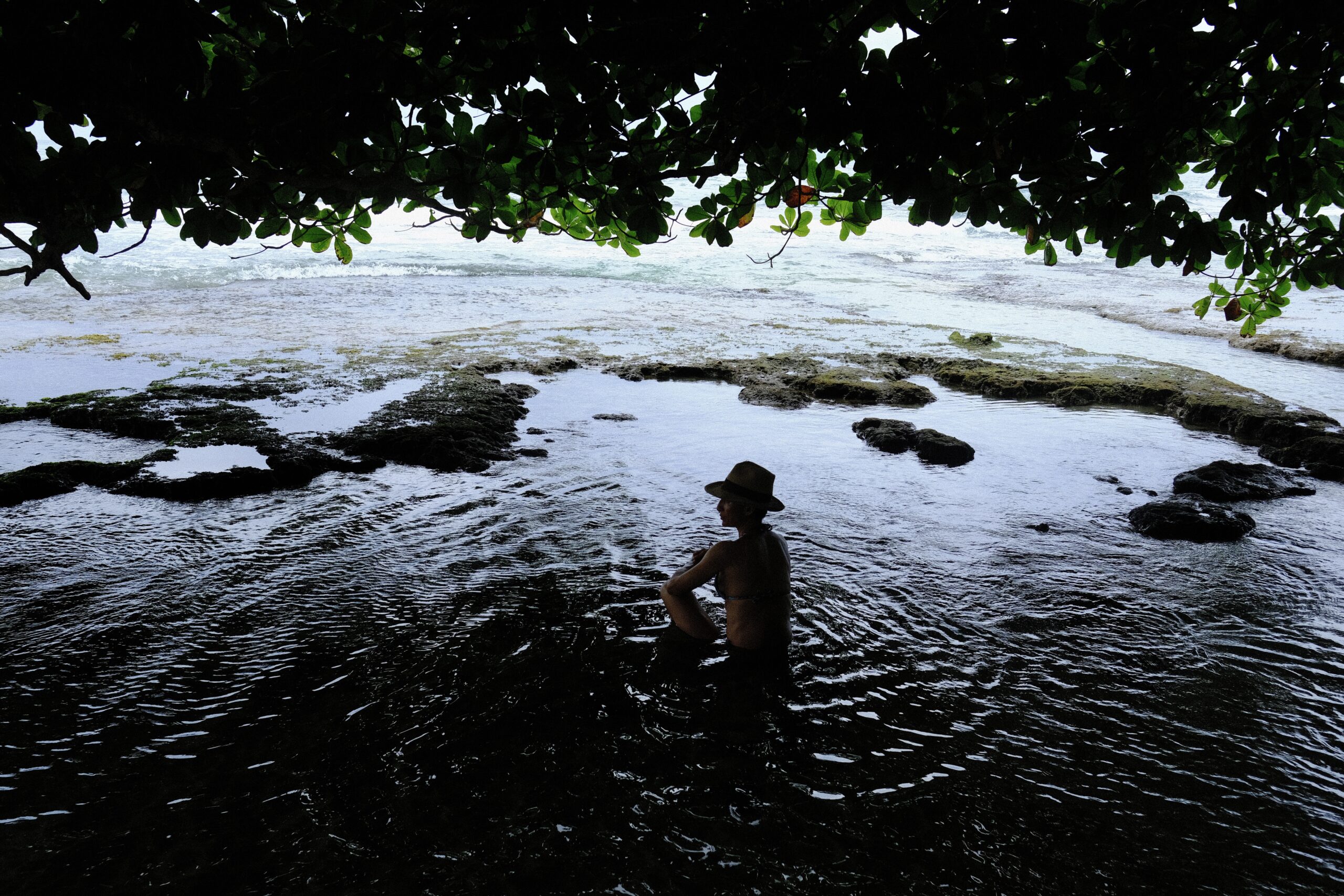A few weeks ago in the South Caribbean, in Chiquita beach, everything was green, turquoise and heat. I entered a pool that offered me freshness under an almond tree that folded towards the sea. The crystal-clear water was full of life: there were little veined fish, black and yellow, and others of sand colour, which swam on the bottom, camouflaged, and yet fearful. On the rocks there were hundreds of snails and so many crabs that I even thought it had not been a good idea to get into their home.
Like a natural symphony, the sound of cicadas met that of waves, which burst in the distance. I wondered if the fish, or maybe the crabs, could hear some of that music. A few meters away, a couple of grey herons were insatiably choosing, a little from here and a little from there, because only in the small portion of beach where I was there were hundreds of pools, equally full of life.
The air was salty. Some red and yellow flowers fell from the almond tree. I made a mental note to find out why those trees have two-coloured flowers, but then I forgot about it, until today. Soon I let myself fall into the present and immersed myself in that space, in that moment. I felt alive, happy, in balance. Who would have thought that, a few years ago, that place had been inhabited by so much desolation?
Coral cemeteries
April 22, 1991, will remain in the memory of many due to the earthquake in the Valle de la Estrella, in Limón. I was with my classmates at the university, on a break from classes, outside the building, when we felt the swaying and saw, stunned and frightened, the lampposts wobble as if they were made of rubber. The stress accumulated over the years, in a fracture of the crust of the South Caribbean, had been released and had reached us, more than 200 kilometres away.
The earthquake collapsed bridges and roads and, in some sectors, raised the coast by up to a meter and a half Its epicentre was in a town called Pandora. What a coincidence that it bears the name of the famous Greek myth of the box and that April 22 is also commemorated as International Mother Earth Day! At the beginning of the nineties, the tourist development of the South Caribbean was just beginning, but who knows, perhaps, the gods and the Earth warned us about the damage to nature that humans would cause.
A couple of months after the earthquake I went with my classmates, on a geological fieldtrip, to Limón. On the beach, the visual shock was overwhelming, but not as much as the nauseating smell that invaded everything. When the reefs and carbonate platforms were exposed, their corals, sponges, algae and sea urchins had died. Being anchored, as if they were underwater trees, many of them could not escape. It was an ecological massacre.
In search of balance
During that tour we went to visit some hills near the city of Limon where we found ancient coral reefs. We were not surprised to find them, but to realize that crustal uplifts in active tectonic environments, such as those in Costa Rica, occur in meters from time to time and not in millimetres per year, as geology books explain. This discovery was a big revelation.
Since the Limon earthquake there have been others in the Pacific, such as the Nicoya earthquake of 2012, which also produced an uplift of the earth’s crust. Seismologists who have studied these events claim that the rises are followed by periods when the crust that has risen sinks, as if it were springs and not rock. As if it were a muscle and not a bone. As if our planet is constantly looking for a balance.
For this reason, explaining erosion on the coast, in a context like ours, is not easy. It is not only due to the rise in sea level, which occurs due to global warming that melts the polar ice caps. Also, among other factors, it is a consequence of the relative changes of the coastline, a product of the crustal plates that rise and fall after the violent earthquakes that occur from time to time.
Sitting in the middle of the pool, I think about the balance that nature pursues and the well-being I experience in that place. I also think how, three decades after the earthquake, there is so much life where there was death. The Earth is not only wise, but also generous. In the blink of an eye on a planet that is 4.5 billion years old, coral graveyards have been reborn.

